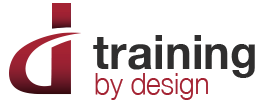 8th November 2016
8th November 2016 Many thanks to our guest poster and associate Simon Anderson of Pro-Fit21 Limited for writing this article.
Stress at work; it manifests itself differently in different people. Some people become ill. Others become aggressive and irascible. Some become tired and lack energy in general. Some rise to it and thrive off it. Others just accept it as a daily occurrence and can let go of it at the end of the day. It all depends on the individual. As an employer or manager it is something you should strive to prevent in your workforce.
Stress at work can usually be attributed to one or a combination of the following: being overworked, not receiving satisfactory recognition, team members not performing, not seeing any progression in the work you are doing, or being expected to attain targets that currently seem far beyond your reach. In many workplaces, the demands placed on us in terms of our time and expected outcomes are increasing, as people feel they are expected to produce more with less resources in an efficient and cost effective manner. This often leads to people working well above and beyond both their contracted hours and agreed responsibilities. This generalisation serves as an example and of course, this doesn’t apply to all work places, but for those to which it does apply, the effect on the physical and mental state of your workforce can be damaging; both for the business and the individuals.
I don’t work in an office environment so the stresses I experience are completely different to that of those that do. I work for myself so I don’t have the stress of having to answer to anyone, this does however mean that at the end of the month I get the panic about whether I’ll have enough money to pay my mortgage, council tax, and various other bills that come through my letterbox. The only person that can determine that is me, which at times is particularly worrying particularly if it’s a ‘slow month’ or clients simply aren’t paying on time. In whatever form you experience it, STRESS is STRESS. But when you break down into its component parts, what actually is ‘stress’?
My profession demands that I study and record human physiological response to a changing environment – or to term it differently – the effect of a variety of stresses on the body both in the short and long-term. The stress that physical training puts people under is a more acute form of stress. For example, when I make someone put the boxing gloves on and punch the pads, that is increasing the demands placed on their body. They are no longer in a rested state and the brain has registered there is a requirement for quick, explosive movements. The sympathetic nervous system kicks in and a variety of hormones and neurotransmitters are released that trigger what is known as a ‘stress response.’ Muscles are ready to contract, heart rate increases to increase oxygen provision and glycogen is released from the muscles to be converted to glucose and used as energy. In simplistic terms this means the body is primed for physical action – or FIGHT or FLIGHT as it’s more commonly known. It’s how we have evolved and was our survival mechanism from when we had to hunt for our food. When the stress is no longer there the para-sympathetic nervous system kicks in and the body looks to return itself to a non-stress state. The heart rate slows down. Muscles relax. The secretion of adrenaline reduces, the secretion of nor-adrenaline increases and the body moves more towards a non-stress state because the stress no longer exists. When this occurs, the body goes into recovery mode particularly if the muscles and cardio-vascular system have been overloaded beyond capacity. In this instance the body adapts by repairing itself to be able to cope with the demand should the same stress be applied another time. For successful recovery, the correct environment needs to be present. Usually sufficient proteins, fats, carbohydrates and rest! This process is repeated over the course of a few months and positive adaptation occurs as the body is overloaded and allowed to recover. In simple terms – STRESS and RECOVERY.
It’s useful to describe stress in physiological response terms because, in actual fact, that is essentially all it is. A physiological response to a change in environment perceived by an individual. Whether the stress be physical or mental in nature, the physiological response remains the same. And like with training, stress with appropriate recovery leads to growth and progression. When considering stress in these terms, we can begin to see a way in which it can be useful to us, almost an essential pre-requisite for personal development and growth in any environment. Conversely, insufficient recovery, can lead to a chronic stress state which is where people experience the negative side effects of the bio-chemical responses of the body, such as the lack of energy, illness, and becoming increasingly irascible, amongst other things.
It is only in the response to stress where the differentiation in approach becomes apparent. As mentioned, physical stresses can be dealt with quite easily. The right food, the right amount of rest. Fairly black and white. Where people struggle more is in recovery from acute bouts of mental stress and there is no one approach fits all methodology. What works for one person may not work for the other. Some people require an aggressive outlet, some require a listening ear, some believe they require a few beers at the end of the week. Some don’t know what they require. Some know what they need to do but don’t believe they have time to do it. Essentially everyone is different but whatever form the recovery takes, it must involve the correct period of ‘switching off.’ Which essentially means that whatever is causing you mental stress must be taken away from your thoughts for an amount of time that allows your bodies bio-chemistry to reset to equilibrium.
So, in conclusion, when thinking about dealing with stress in the workplace, it helps to re-contextualise it in physiological terms. When we do this, we simply see it as the bodies way of helping us deal with an increased physical or mental demand. In that sense we can begin to see it as a useful tool to help us grow. Where stress becomes an issue is when we don’t take the time or put the effort into allowing ourselves to recover. The bio-chemical response is not designed to be long-term and can lead to physical and mental health issues at some point in the future if not addressed.
Organisations need to begin addressing the issue of stress management if they have not started doing so already. Whether this be in the form of education about how to actually deal with it or by providing opportunities for their employees to explore various methods that could work for them.
We can help you to evaluate the levels of stress in your workforce and work with you to develop a tailored programme to spot the signs, reduce the risk and prevent the problem.
Contact HR Solutions by Design today on 0161 437 0013 for a no-obligation discussion on your requirements.















Leave a Reply
You must be logged in to post a comment.